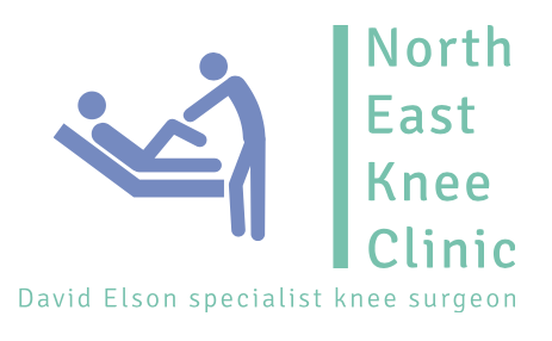Suffering a sporting injury that damages the ligaments inside your knee can be a devastating event. The trauma is often very painful and subsequently your knee may remain unstable so that it will collapse without warning. Patients with ligamentous instability not surprisingly become nervous about the injured knee and may then have to restrict themselves to more sedentary activities.
The most commonly injured knee ligament is the anterior cruciate ligament. My surgical strategy for ACL injuries is based upon the pattern of injury to the ligament and the level of rupture.
In about a quarter of patients the rupture is high enough for the ligament to have been pulled off the femur bone. These cases may be amenable to a repair and bracing procedure which uses the stump of torn ACL which is then reattached to the correct position towards the back of the femoral notch and encouraged to heal whilst being braced in this position. The advantage here is that the patient does not require graft harvesting from his or her own body and in addition the patient keeps their own proprioceptive nerves which give early joint position sense feedback during the shortened rehabilitation. After all surely the best graft is the original ACL tissue, which was injured.
If the stump is not quite long enough to reach the insertion point but there is a well vascularised sleeve of tissue then I slide a graft through this sleeve so that the proprioceptive fibres are maintained and this should have improved chances of healing.
If the stump is short or the tissue has been badly damaged then I perform a standard ACL reconstruction, but my technique typically harvests just one hamstring tendon, which should speed up your recovery, and I drill bony sockets rather than tunnels which has been shown to produce less bony pain.
I endeavour to include my patients in the national ligament registry as a means of monitoring my patient outcomes from this surgery and contributing to our collective understanding of the procedure. Using this tailored approach to the injury pattern has resulted in outcomes scores that are higher than the national average at 1 year post op: Improvement in EQ-5D index (0.27 vs 0.18), Improvement in EQ-5D Health VAS (19.1 vs 5.26), improvement in Tegner activity score (2.48 vs 2.47) IKDC (International knee documentation committee) score improvement (32.1 vs 21.9). I have a higher rate of meniscal repair medially (50% vs 44.2%) and laterally (62.5% vs 38.7%)
The most commonly injured knee ligament is the anterior cruciate ligament. My surgical strategy for ACL injuries is based upon the pattern of injury to the ligament and the level of rupture.
In about a quarter of patients the rupture is high enough for the ligament to have been pulled off the femur bone. These cases may be amenable to a repair and bracing procedure which uses the stump of torn ACL which is then reattached to the correct position towards the back of the femoral notch and encouraged to heal whilst being braced in this position. The advantage here is that the patient does not require graft harvesting from his or her own body and in addition the patient keeps their own proprioceptive nerves which give early joint position sense feedback during the shortened rehabilitation. After all surely the best graft is the original ACL tissue, which was injured.
If the stump is not quite long enough to reach the insertion point but there is a well vascularised sleeve of tissue then I slide a graft through this sleeve so that the proprioceptive fibres are maintained and this should have improved chances of healing.
If the stump is short or the tissue has been badly damaged then I perform a standard ACL reconstruction, but my technique typically harvests just one hamstring tendon, which should speed up your recovery, and I drill bony sockets rather than tunnels which has been shown to produce less bony pain.
I endeavour to include my patients in the national ligament registry as a means of monitoring my patient outcomes from this surgery and contributing to our collective understanding of the procedure. Using this tailored approach to the injury pattern has resulted in outcomes scores that are higher than the national average at 1 year post op: Improvement in EQ-5D index (0.27 vs 0.18), Improvement in EQ-5D Health VAS (19.1 vs 5.26), improvement in Tegner activity score (2.48 vs 2.47) IKDC (International knee documentation committee) score improvement (32.1 vs 21.9). I have a higher rate of meniscal repair medially (50% vs 44.2%) and laterally (62.5% vs 38.7%)

